Hunting Arrowheads: Hints to Quickly Begin Finding Them
If I had only known then what I know now, I could have built a substantial collection in that one place, and I also could have found many more productive sites within walking distance from my home.
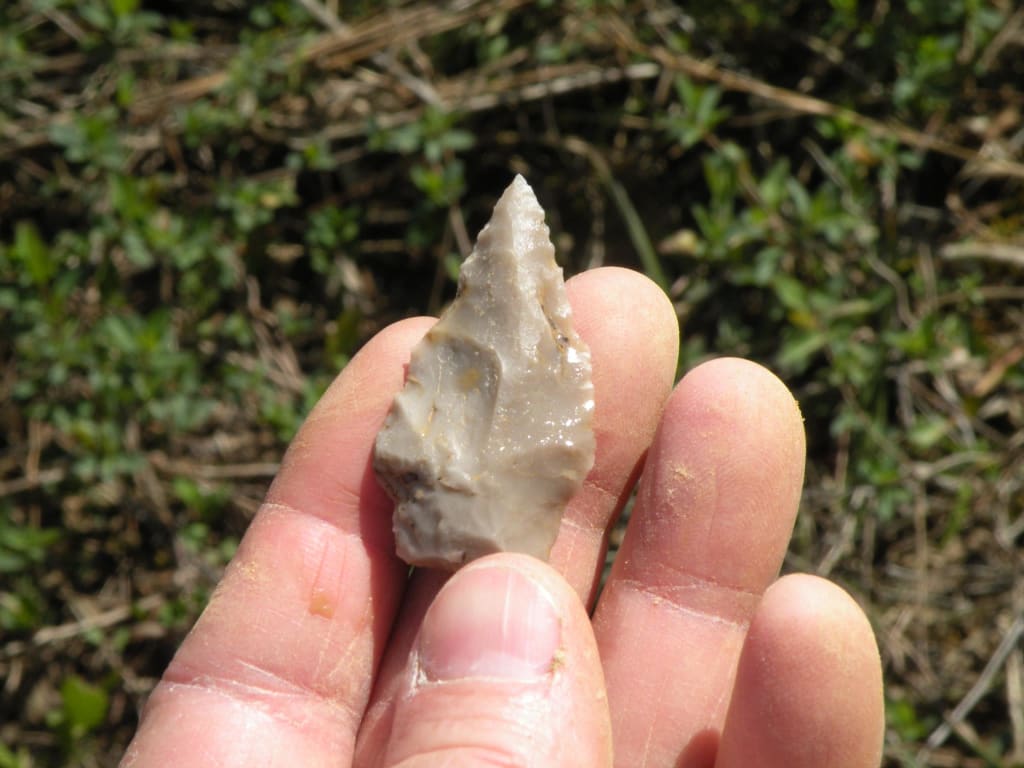
As a kid, I picked up the occasional arrowhead. As an adult, I have learned strategies to increase the likelihood of making discoveries.
Arrowheads Are Not Hard to Find
I loved the outdoors when I was a kid. Since I lived in a rural area, and I was outdoors as often as possible, I picked up the occasional arrowhead.
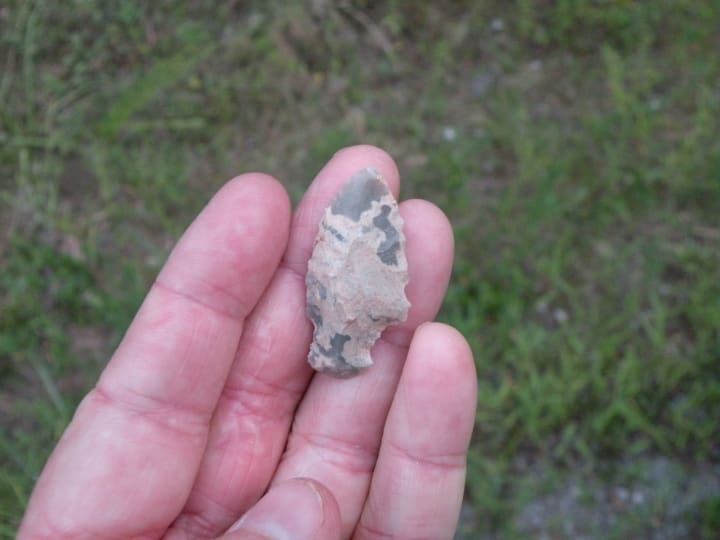
However, I was lucky enough to find about a dozen arrowheads, along with a bag full of pottery sherds, when land was being cleared for a lake. If I had only known then what I know now, I could have built a substantial collection in that one place, and I also could have found many more productive sites within walking distance from my home.
If that lake continues to hold water, I will never find another arrowhead there, but there are always other places to look!
Look for Debitage, Not Arrowheads
It might not make sense on the surface, but almost certainly "hunting for arrowheads" is the main reason a beginner will not find arrowheads. Rather than hunting for arrowheads, hunt for sites where arrowheads are likely to be found. Pinpoint a site by looking for debitage. Debitage is the term used by archaeologists to refer to the waste material left over from the production of a stone tool. It is extremely easy to spot once you learn to recognize it.
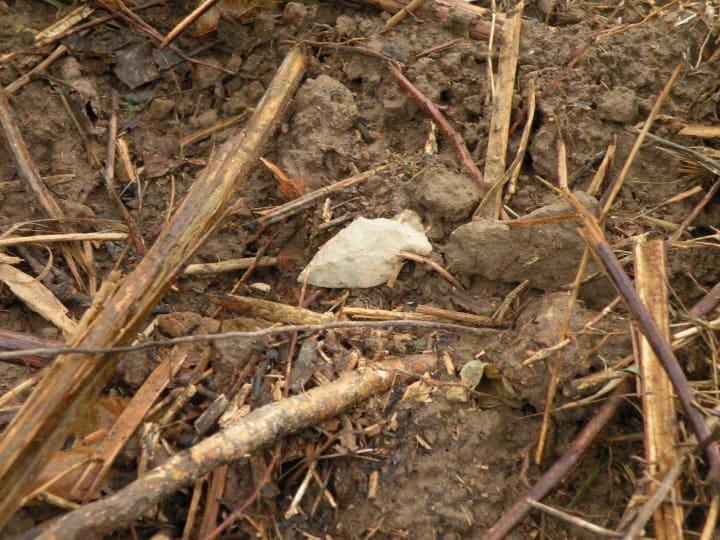
A big part of the equation, nothing else even comes close, is training the eye. Seasoned hunters are not looking for artifacts, per se-- they are looking for the signs that lead them to artifacts. When you spot debitage for the first time, pick it up and study it.
Draw conclusions as to what makes the debitage you have found different than the rest of the rocks you see all the time. Now look seriously for artifacts, walking in circles away from where you found the chips and flakes. Cover every piece of ground. If you find an artifact, go back over the area that you think you have already searched. Once you have covered the area thoroughly, remember the spot and go back after a good rain and do it all over again. Sometimes it takes several rains to turn up new artifacts; it depends on the lay of the land and the amount of rainfall.
In essence, you will look for out-of-place rocks. Debitage will not look like the surrounding material.
Identifying Debitage
When you find debitage, it is almost certain that you have also found a site where ancient man once engaged in the production of stone tools. Sometimes there is extraordinarily little debitage which could mean that you have found a place where someone once stopped to chip out a tool. Other times you will find so much debitage that you can assume that you have found a camp or village site. Debitage can cover dozens of acres or more.
This is what debitage looks like in the field:
Most of the material in the following photo is shale. There is a small amount of sandstone. The material that appears mostly white is chert, which does not normally flake and chip naturally. That chert could be a myriad of different colors, but it will not resemble the surrounding material.
Debitage and stone tools in my part of the country is mostly chert. I also find artifacts made of jasper and quartz.

Here is a scanned photo of debitage:
Most beginners are surprised at the amount of debitage that is out there once they learn what it looks like.

Artifact Shapes Vary
Another common mistake beginners make is hunting for arrowheads, but ignoring the other tools that Native Americans used in their daily lives such as knives, scrapers, gravers, and choppers.
Most artifacts are not arrowheads shaped like Christmas trees.
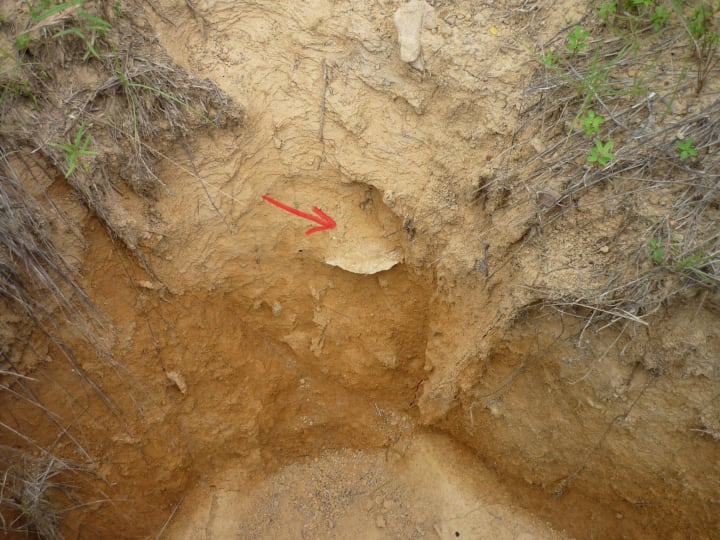
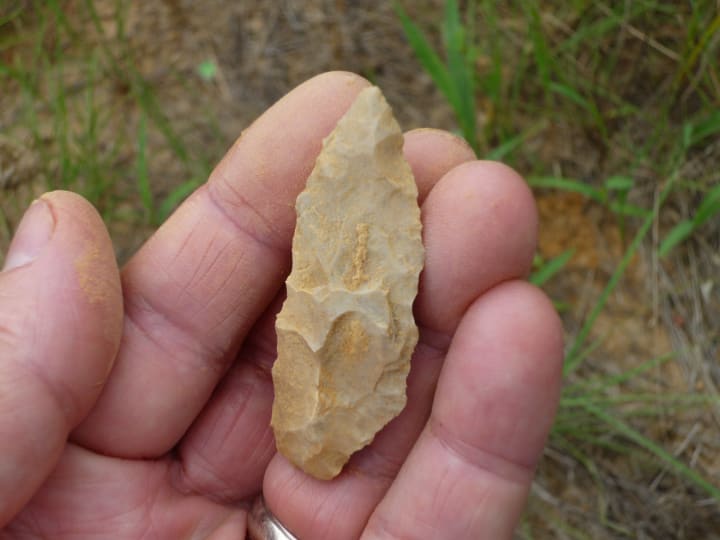
I get a thrill every time I find an arrowhead, but the fact is that an arrowhead alone does not tell much of a story. I frame all my finds by site, not by type, for that very reason. You will find all types of artifacts on good site.
Eventually, as you begin to find debitage and finished artifacts, you will train your eye to key in on things that look like an artifact because of shape, mineral type, color, and patina. It will certainly come in time and probably sooner than you think.
Consider the Landscape

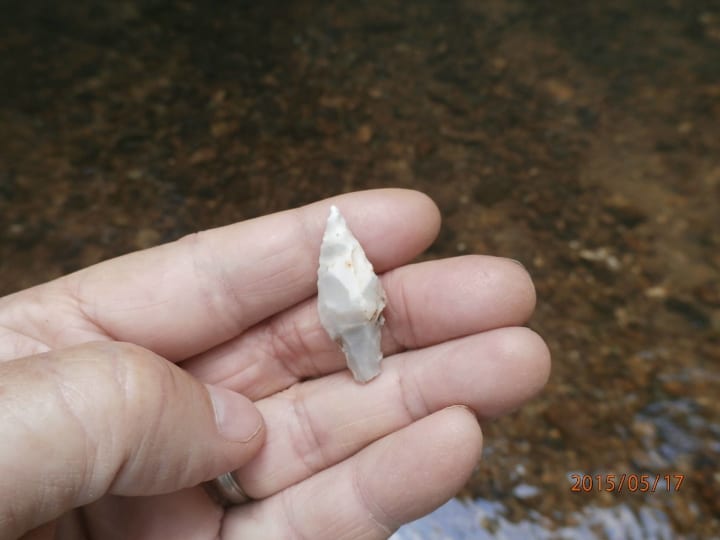
In many ways Native Americans were not that much different than modern man, so when you are looking for an area to hunt, think where you would want to walk, hunt and live. Trails were often across the highest ground, and in hilly areas trails always crossed the passes. They lived near water, but not in it, so the first few rises from "old" water will probably be productive if there are cleared areas to search.
Old water are rivers, streams, and lakes that have existed for thousands of years. Most people who have not thought much about the subject, think these relics of the past are a few hundred years old and maybe date back to the first European explorers. Native Americans left the Stone Age not long after the Europeans arrived. Only the most recent Native American artifacts date back a few hundred of years. Finding 3,000-7,000-year-old Native American artifacts is common.

In the above picture, notice that higher ground borders both sides of the creek, meaning for thousands of years the water flowed in the same place. Arrowheads are going to be on both sides of the creek and in the creek. The greatest accumulation of artifacts in the picture, most likely will be in the highest area in the foreground and in the water at the bend in the creek. The reason so many arrowheads are in the creek is they washed and eroded into the creek from higher areas. Arrowheads tend to collect in bends in the creek.
The areas with the greatest accumulation might not be feasible to hunt because most hunters stay out of the water and they don't dig. So most hunters will look for eroded or cleared areas near the creek, like plowed fields, power lines, logging trails, construction sites, etc.
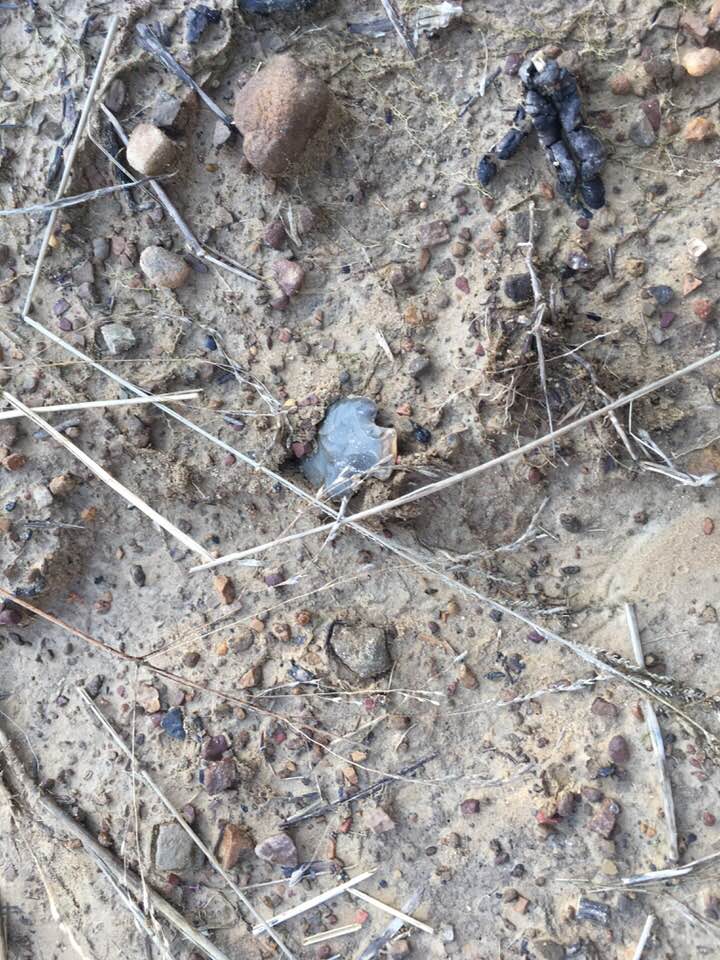

Archaeologists and anthropologists do not all agree when the first Native Americans arrived on this continent, but most do believe that the first ones walked across an ice land bridge, which disappeared as the earth warmed, at least 12,000 years ago. From even that low time estimate we can be certain that millions of Native Americans walked this continent before the Europeans arrived. That means that they left a lot of artifacts behind, and in fact, most of them will never be found.
They are out there. You can find some of them.
Read my interview with an expert arrowhead hunter here.
Order my book, Yes, You Can Find Arrowheads, here.
About the Creator
Bill Coleman
Hello! I am a traveler, outdoorsman, and writer.







Comments
There are no comments for this story
Be the first to respond and start the conversation.